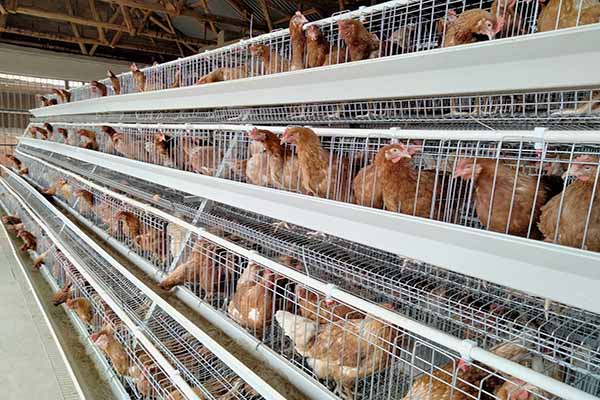Tanzania Chicken Farm Automation Management Plan: A Professional Approach
Time : 2025-06-26
Introduction
Automation in poultry farming, particularly in Tanzania, has become a crucial aspect for enhancing efficiency, reducing labor costs, and ensuring the overall health and productivity of the chickens. This article aims to provide a comprehensive automation management plan for a Tanzania chicken farm, integrating advanced technologies and practical management strategies.
Section 1: Assessing the Current Situation
Before implementing an automation management plan, it is essential to assess the current state of the chicken farm in Tanzania. This includes evaluating the current infrastructure, equipment, and processes in place.
1. Infrastructure Evaluation
Evaluate the existing infrastructure of the chicken farm, including the layout, building condition, and availability of utilities such as electricity, water, and ventilation. This will help identify any areas that require improvement or modification to accommodate automation systems.
1. Equipment Assessment
Assess the current equipment used in the farm, such as feeders, waterers, incubators, and environmental control systems. Determine the compatibility of existing equipment with automation technologies and identify any outdated or malfunctioning equipment that needs replacement.
1. Process Analysis
Analyze the current farming processes, including feeding, watering, health monitoring, and egg collection. Identify bottlenecks, inefficiencies, and areas that can be improved through automation.
Section 2: Setting Objectives
Defining clear objectives for the automation management plan is crucial for ensuring its success. Here are some key objectives to consider:
1. Enhance Efficiency
Automate repetitive tasks to reduce labor costs and improve overall farm productivity. This includes automated feeding, watering, and environmental control systems.
1. Improve Animal Health and Welfare
Implement automated systems for health monitoring, such as weight tracking, temperature sensing, and disease detection. This will enable early intervention and better animal welfare.
1. Increase Egg Production
Optimize the farming process through automation to maximize egg production. This includes automated feeding, lighting, and nesting systems.
1. Streamline Record Keeping
Automate data collection and record-keeping processes to ensure accurate and timely information for decision-making and analysis.
Section 3: Implementing Automation Technologies
To achieve the set objectives, the following automation technologies can be integrated into the Tanzania chicken farm:
1. Automated Feeding Systems
Implement automated feeding systems that provide precise feeding quantities based on individual chicken needs. These systems can be programmed to adjust feeding schedules and quantities based on growth stages and health conditions.
1. Automated Watering Systems
Install automated watering systems that ensure constant access to fresh water, reducing the risk of dehydration and improving overall health.
1. Environmental Control Systems
Utilize environmental control systems to regulate temperature, humidity, and air quality. This will create an optimal environment for chicken growth and reduce the risk of disease outbreaks.
1. Health Monitoring and Disease Detection
Implement automated health monitoring systems, such as weight tracking and temperature sensing, to detect any deviations from normal patterns. This will enable early intervention and reduce the risk of disease spread.
1. Egg Collection Systems
Automate the egg collection process to reduce manual labor and improve efficiency. This can be achieved through automated egg belts or collection bins.
Section 4: Management Strategies
In addition to automation technologies, effective management strategies are essential for the success of the Tanzania chicken farm automation management plan. Here are some key strategies:
1. Training and Education
Provide training and education to farm staff on the operation and maintenance of automation systems. This will ensure proper utilization and minimize downtime.
1. Regular Maintenance
Implement a regular maintenance schedule for all automated systems to prevent malfunctions and ensure optimal performance.
1. Monitoring and Analysis
Regularly monitor the performance of automation systems and analyze data to identify areas for improvement. This can help in fine-tuning the systems and optimizing the farming process.
1. Data Security and Privacy
Ensure the security and privacy of data collected through automation systems. Implement robust cybersecurity measures to protect sensitive information.
Conclusion
Implementing an automation management plan for a Tanzania chicken farm can significantly improve efficiency, reduce costs, and enhance animal health and welfare. By integrating advanced automation technologies and practical management strategies, poultry farmers in Tanzania can position themselves for long-term success in the competitive poultry industry.












